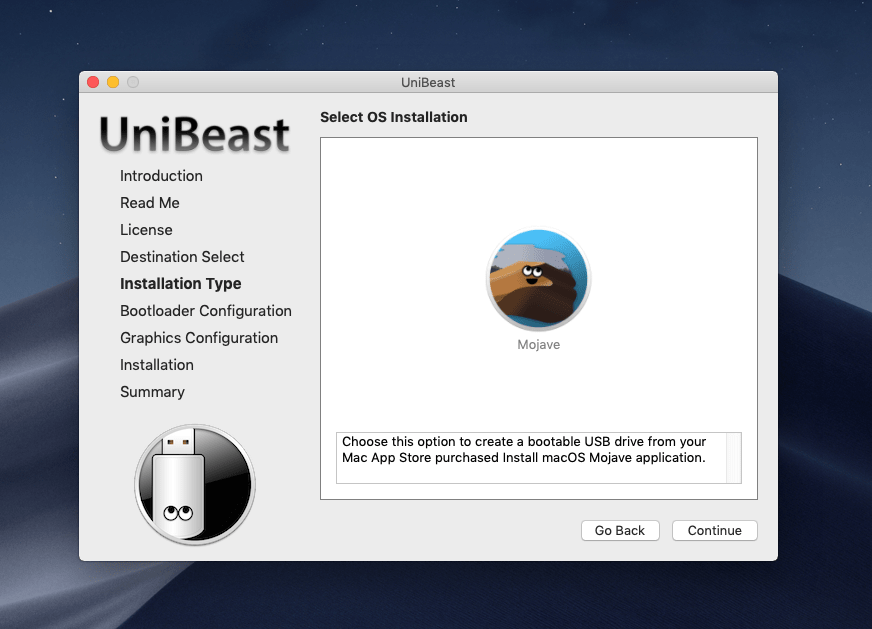
- Mac install bootloader on usb drive upgrade#
- Mac install bootloader on usb drive windows 10#
- Mac install bootloader on usb drive windows 8#
- Mac install bootloader on usb drive windows 7#
When done, close Gparted partition manager.ĥ. From the right-click context menu, un-mount partitions on the USB drive and then delete them.Ĭlick the green check mark button to apply changes, finally you have an unallocated flash drive, like: I have two USB flash drives plugged in the computer, the Hard Disk is /dev/sda, 4GB Live USB is /dev/sdb, and the 16GB USB drive is /dev/sdc.Ĥ. In the top-right drop-down box select the USB drive (16GB in my case), and you should see something like below: To disable “secure boot”, follow this screenshot tutorial.ģ. To disable “fast startup”, go to Control Panel > Hardware and Sound > Power Options > System Settings > Choose what the power buttons do and uncheck the Turn on fast startup box.
Mac install bootloader on usb drive windows 8#
IMPORTANT: For Windows 8 pre-installed machine, you have to disable “fast startup” and “secure boot” features. Plug in the bootable USB drive to your computer and boot into the Live Ubuntu system. Type the convert GPT command and press Enter.Įnter the create partition primary command and press Enter to complete the process.If you need more hints, follow this screenshot tutorial to create bootable Ubuntu Live USBĢ.

Type the select disk command with the number assigned for the USB flash drive (for example select disk 4) and press Enter. Type the diskpart command and press Enter.Įnter the list disk command to view all drives connected to your computer and press Enter. Search for Command Prompt, right-click the top result, and select the Run as an administrator option. To create a GPT partition on a removable drive, use these steps:
Mac install bootloader on usb drive windows 10#
However, this time, you should use the following steps to use the Diskpart command-line utility on Windows 10 to create the appropriate GPT partition, and then follow the above instructions. In this case, you may need to redo the entire process again. If the USB flash drive is not working with TransMac, it could still be a partition problem. Create a GPT partition on a USB flash drive
Mac install bootloader on usb drive upgrade#
Once you complete the steps, you can now insert the USB flash drive on your Mac computer to install, reinstall, or upgrade the operating system to the latest macOS version, which can be Sierra, Catalina, Big Sur, Monterey, or higher. TransMac creates a macOS USB bootable drive warning. Select dmg macOS file to create a bootable USB drive dmg file with the macOS installation files. Right-click the USB flash drive and select the Restore with Disk Image option from the left navigation pane.Ĭlick the Yes button to confirm the erase of the USB flash drive data. To create a bootable USB drive with macOS, use these steps:ĭownload and install TransMac on Windows 10.


In this guide, you will learn the steps to create a macOS Monterey bootable USB installation on Windows 10, which you can use to reinstall or upgrade the Apple OS.
Mac install bootloader on usb drive windows 7#
You can use a Windows 10 (or 11), Windows 8.1, or Windows 7 device to quickly create a USB bootable installation media to reinstall macOS Monterey, Big Sur, or Catalina on your Mac. However, if none of your devices (MacBook, MacBook Air, MacBook Pro, iMac, Mac Pro, or Mac Mini) are not working when you need them the most, you can use a Windows computer to rescue your Apple device. This is one of the main reasons you should consider making a macOS bootable USB when your device works properly. If the unexpected happens with an Apple computer, you can use a macOS bootable USB with the installation media to repair it. It’s just a matter of time until your computer will refuse to start, which could happen for many reasons, including (and not limited to) file corruption, hardware failure, and buggy update. It does not matter whether you use macOS, Windows 10, or Windows 11.


 0 kommentar(er)
0 kommentar(er)
